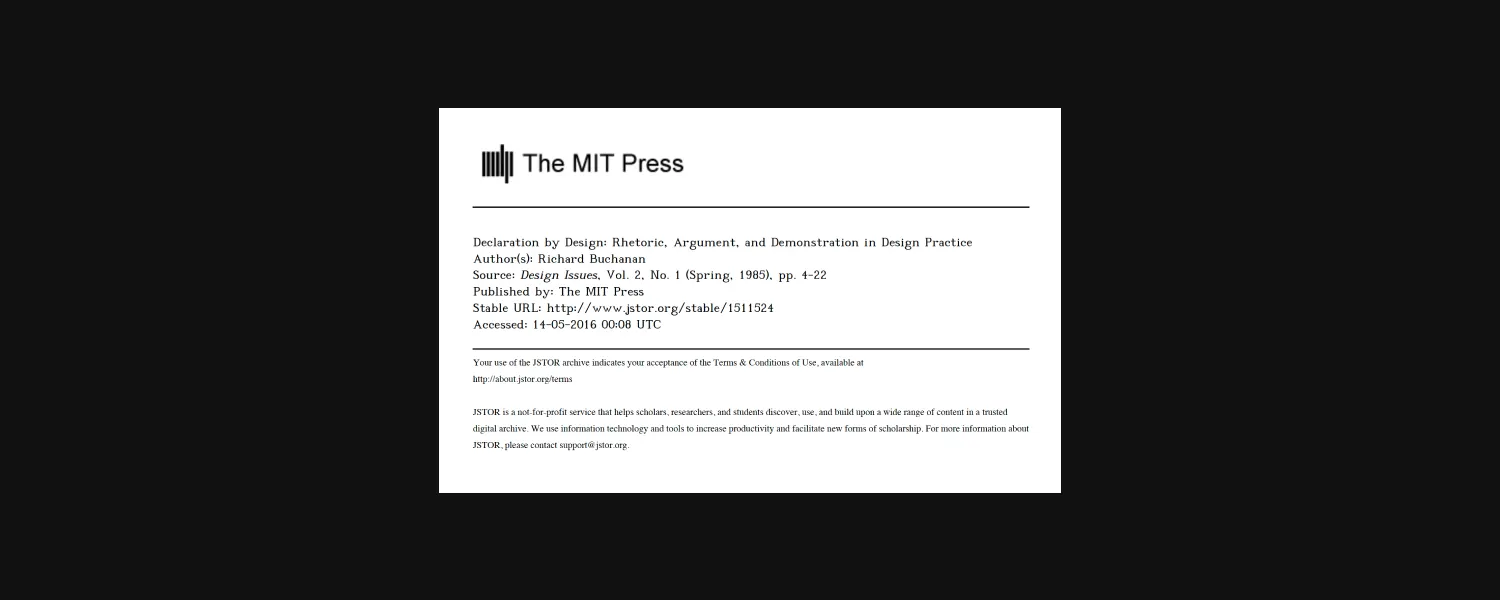IMAGE by Lee Jeffs
Every notification, every scroll loop, every design choice directs our focus and our power.
Again and again, I return to Richard Buchanan’s Declaration by Design: Rhetoric, Argument, and Demonstration in Design Practice. In this text, Buchanan reminds us that all design is a form of rhetoric. It communicates ideas, arguments, and worldviews. A designed object or interface doesn’t simply solve a functional problem; it expresses a vision of how the world could be, and what place the human being occupies within it.
Every design decision, from the layout of a website to the logic of an algorithm, embodies assumptions about what matters and what doesn’t. Design is never neutral. It persuades, directs, and shapes experience.

Buchanan’s article delves into the rhetorical dimensions of design, emphasizing the role of argument and demonstration in shaping effective practice. He highlights how design isn’t just about aesthetics or function, it’s a form of communication with persuasive and ethical implications.
The Politics of Calm
In today’s landscape, dominated by the so-called AI race, this becomes even clearer. Technology is evolving faster than regulation, while public debate struggles to keep up. Companies and nations compete to release new models, automate more tasks, and collect more data, often without considering long-term social or psychological consequences.
In this context, choosing to design calmly is, indeed, a political act. It resists the logic of speed, scale, and market domination that drives much of today’s technology development. It proposes another relationship with technology. One grounded in reflection, safety, and care.
Even Mark Weiser, who introduced the concept of Calm Technology in the 1990s, acknowledged the political dimension of invention. In his Principles for Inventing Socially Dangerous Technologies, he proposed two essential rules:
- Build it as safe as you can, embedding every possible safeguard for human values.
- Tell the world you are doing something dangerous.
These principles reveal a deep ethical awareness. Weiser understood that technology is never innocent; it always alters the conditions of living. Designing calm technology, therefore, is not just a matter of interface or usability, it’s a stance of responsibility.

IMAGE by Stacey Knipe
Calm Design as Resistance
To design calmly is to question the prevailing logic of attention extraction, algorithmic persuasion, and technological acceleration. It is to say no to the idea that innovation must always mean “more”: more data, more engagement, more speed.
Calm design asks instead: What kind of world are we building, and at what cost to human presence and collective well-being?
In a time when technologies like AI are being weaponized—fed by nationalisms, market ambitions, and the pursuit of dominance—calm design offers an alternative paradigm. It suggests that progress can also mean restraint. That responsibility can be a form of innovation. That sometimes the most radical act is to slow down.
A Call for Conscious Design
The question is not whether design should be political, it already is. The question is: what politics do we want our designs to serve?
Design has the power to reinforce systems of control, or to open spaces of empathy and reflection. Calm design chooses the latter. It advocates for technologies that respect attention, protect values, and foster a more humane relationship with our tools.
In this sense, calm design is yes, a design philosophy, but it is also an ethical and political commitment to a more thoughtful future.

IMAGE by Lala Azizli


